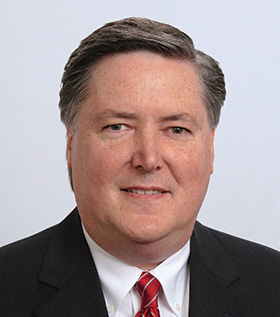Clayback to leave on high note NCART’s accomplishments under his leadership include protection of accessories for manual complex rehab wheelchairs

By Liz Beaulieu, Editor
Updated 12:29 PM CDT, Fri May 6, 2022
 EAST AMHERST, N.Y. – When Don Clayback steps down from NCART later this year, his parting wish for the organization is increased support – from providers, clinicians, manufacturers and consumers.
EAST AMHERST, N.Y. – When Don Clayback steps down from NCART later this year, his parting wish for the organization is increased support – from providers, clinicians, manufacturers and consumers.
“We need to figure out how to double the core that we’ve created,” said Clayback, who will leave his executive director post on Sept. 30 after 13 years. “Our messaging is good – we have a good story to tell – but we need more voices and more financial backing to support that message and build on it.”
Clayback highlighted NCART’s accomplishments under his leadership and shares why he hopes to keep one foot in the complex rehab industry.
HME News: When you think back on your time at NCART, what are you most proud of?
Don Clayback: Two things: The establishment of a greater awareness of CRT and the creation of true collaboration among the various CRT stakeholders. An embodiment of this was the evolution, in partnership with NRRTS, of the annual congressional fly-in – hosting the technology expositions, bringing in the consumer voice. Events like this helped to create the CRT identity of what it’s all about, who uses it and why it’s important that access be protected. That was one of our missions: to really carve out our own identity, so policymakers have a better understanding.
HME: What are some of the accomplishments you were able to help NCART and the industry achieve?
Clayback: From a legislative or regulatory perspective, I’d have to say carving out CRT from the competitive bidding program was really the first major win for the industry. Certainly, we’re an industry group so the health of businesses is important, but it really was all about providing and maintaining access to people who need CRT equipment. I think the initiatives around a separate benefit category for CRT, while they continue to evolve, have gone a long way toward getting a distinct recognition for CRT. And I think the most recent major win was exempting accessories for complex power and manual wheelchairs from the bid program and pricing, which was a multi-year effort and which we were able to put to bed last year.
HME: You’ve seen a lot of changes over the years, including a larger presence by national companies specializing in complex rehab.
Clayback: Potential members often ask me, “Is NCART all about the big companies?” The short answer is no. The initiatives that NCART has been involved with have been focused on improving access, whether that’s through coverage policies or fee schedules. We’re all about letting the competition take place in the marketplace, outside of the organization. If we improve coverage and rates, everyone wins. If you look at our board, we also have a cross-section of companies. Effective advocacy benefits all companies.
HME: What’s next for you?
Clayback: I’d like to stay involved in CRT in some manner – I haven’t sorted that out. I’ve enjoyed the work and you couldn’t ask for a more noble mission, but I needed a change. I’m also focused on making sure it’s a smooth transition and letting the next executive director continue to build on what we have in place.
Comments